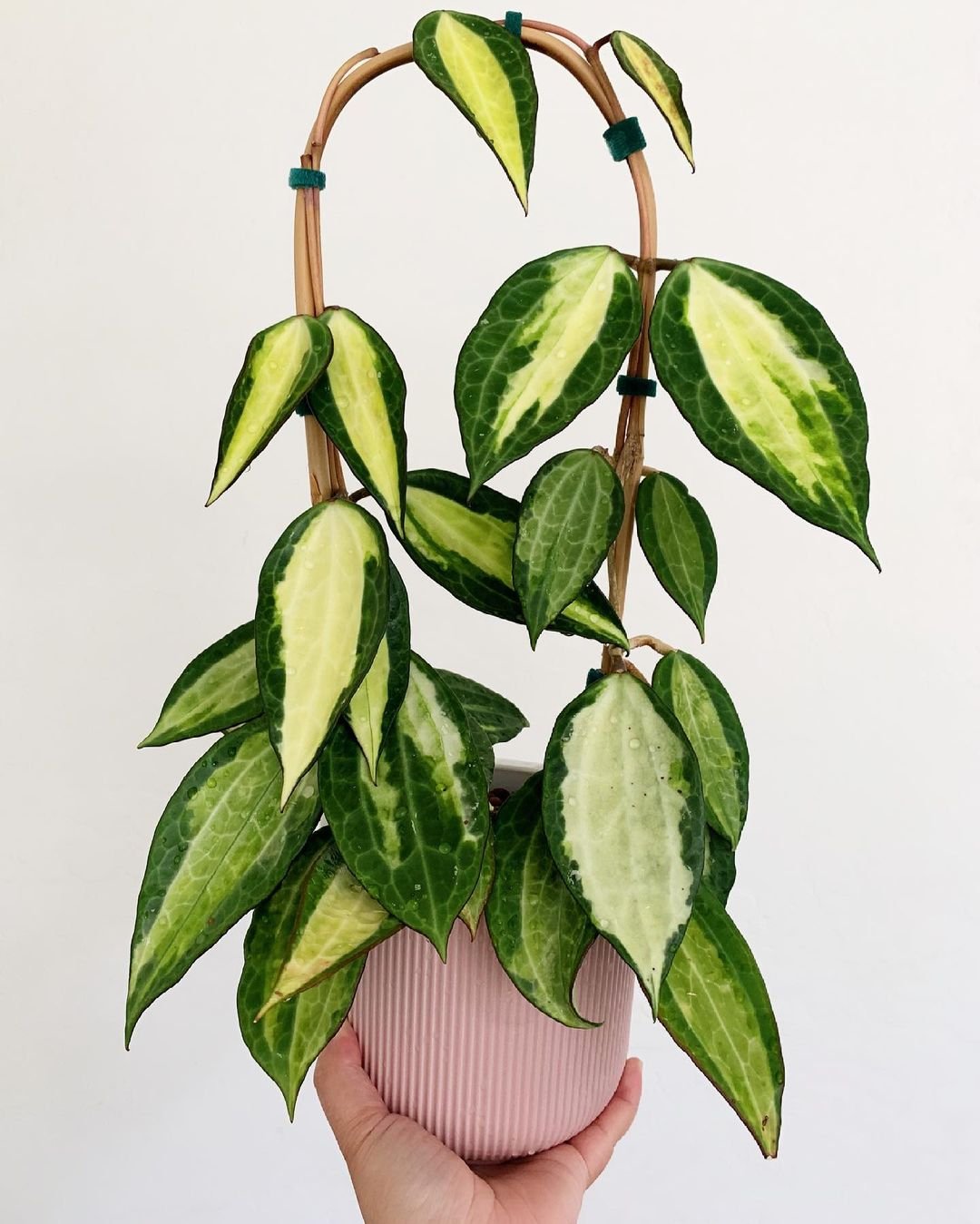Discover the beauty of Hoya Macrophylla! Learn how to grow, care for, and propagate this stunning houseplant known for its unique leaves and beautiful blooms. Perfect for plant lovers of all levels!
Hoya Macrophylla, also known as the Big Leaf Hoya, is a captivating houseplant loved for its striking foliage and lovely flowers. In this guide, I’ll share expert tips on how to cultivate and care for Hoya Macrophylla, ensuring your plant thrives and becomes a beautiful centerpiece in your home.
As an avid houseplant enthusiast with years of experience, I can confidently say that Hoya Macrophylla is a fantastic choice for both beginners and seasoned plant parents. Its thick, waxy leaves are not only visually appealing but also drought-tolerant, making it relatively easy to care for. Plus, when it blooms, it produces clusters of fragrant, star-shaped flowers that can brighten up any space.
Here’s a detailed chart for Hoya Macrophylla:
| Category | Information |
|---|---|
| Botanical Name | Hoya macrophylla |
| Common Name | Hoya Macrophylla, Wax Plant |
| Plant Type | Evergreen, Perennial |
| Hardiness Zone | USDA Zones 10–11 (typically grown indoors elsewhere) |
| Sun Exposure | Bright, indirect light |
| Soil Type | Well-draining, loose, orchid or cactus mix |
| Watering | Moderate; allow soil to dry out slightly between waterings |
| Growth Habit | Climbing, trailing |
| Height/Spread | 2–4 feet as an indoor plant |
| Special Features | Thick, leathery variegated leaves with creamy white edges; fragrant, star-shaped flowers; low-maintenance |
Characteristics of Hoya Macrophylla:

- Leaves: Large, waxy, and dark green, sometimes variegated with creamy or yellow edges.
- Flowers: Clusters of star-shaped blooms that can be pink, white, or red.
- Growth Habit: A climbing vine that can grow up to 10 feet in length under the right conditions.
- Hardiness: Prefers USDA hardiness zones 9-11, making it ideal for indoor cultivation in cooler climates.
For more information on Hoya species, visit the American Hoya Society.
Growing Hoya Macrophylla
Ideal Growing Conditions
To cultivate a healthy Hoya Macrophylla, consider the following conditions:
- Light: Prefers bright, indirect sunlight. Too much direct sun can scorch the leaves, while insufficient light can hinder flowering.
- Temperature: Thrives in temperatures between 60-80°F (15-27°C). Protect from cold drafts and extreme temperature fluctuations.
- Humidity: Enjoys higher humidity levels, around 50-70%. If your home is dry, consider using a humidity tray or a humidifier.
Soil Requirements
Hoya Macrophylla requires well-draining soil to prevent root rot. A mix of:
- Potting soil
- Perlite or pumice
- Orchid bark
is ideal for ensuring good drainage and aeration.
Planting Steps
- Choose a Pot: Use a pot with drainage holes to prevent excess moisture.
- Soil Preparation: Fill the pot with your well-draining soil mix, leaving enough space for the root ball.
- Placement: Gently remove the plant from its nursery pot and place it in the new pot, ensuring the top of the root ball is level with the soil surface.
- Watering: Water thoroughly after planting to settle the soil around the roots.
For detailed planting instructions, check out the Royal Horticultural Society’s planting guide.
Caring for Hoya Macrophylla
Watering
- Allow the top 1-2 inches of soil to dry out between waterings. Hoya Macrophylla is sensitive to overwatering, so it’s better to underwater than overwater.
- During the growing season (spring and summer), water more frequently. In the winter, reduce watering as the plant enters dormancy.
Fertilizing
- Feed with a balanced liquid fertilizer diluted to half strength every 4-6 weeks during the growing season.
- Avoid fertilizing in the winter when the plant is dormant.
Pruning
- Prune Hoya Macrophylla after flowering to encourage bushier growth and remove any dead or yellowing leaves.
- Pinch back the tips of the vines to promote branching and a fuller appearance.
Propagation
Hoya Macrophylla can be propagated through stem cuttings. Here’s how:
- Take Cuttings: Use a clean, sharp knife to take cuttings of 4-6 inches long, making sure each cutting has at least two leaves and a node.
- Rooting: Place the cuttings in water or directly into a well-draining soil mix. If using water, change it regularly until roots develop.
- Planting: Once roots are a few inches long, transplant the cuttings into individual pots.
For more detailed propagation techniques, visit the Gardenia.net propagation guide.
Pest and Disease Management
Hoya Macrophylla is relatively pest-resistant, but keep an eye out for:
- Mealybugs: Treat with neem oil or insecticidal soap.
- Spider mites: Increase humidity and use a gentle spray of water to dislodge them.
- Fungal infections: Avoid overhead watering and ensure good air circulation.
For more information on pest management, check out the University of Florida’s pest management resources.
Landscape Uses
While Hoya Macrophylla is primarily grown as a houseplant, it can also be used in:
- Hanging baskets: Allow the vines to cascade beautifully.
- Trellises: Encourage climbing for a vertical display.
- Indoor gardens: Pair with other houseplants for a lush look.
Environmental Benefits
- Acts as an air purifier, improving indoor air quality.
- Provides nectar for pollinators when flowering, contributing to biodiversity.
Learn more about the benefits of houseplants from the NASA Clean Air Study.
Hoya Macrophylla is an exceptional houseplant that combines beauty and ease of care. With its stunning foliage and delightful blooms, it can elevate any indoor space. By following the tips outlined in this guide, you can ensure your Hoya Macrophylla thrives and becomes a cherished part of your plant collection.
For more in-depth information on Hoya care, visit the Hoya International.